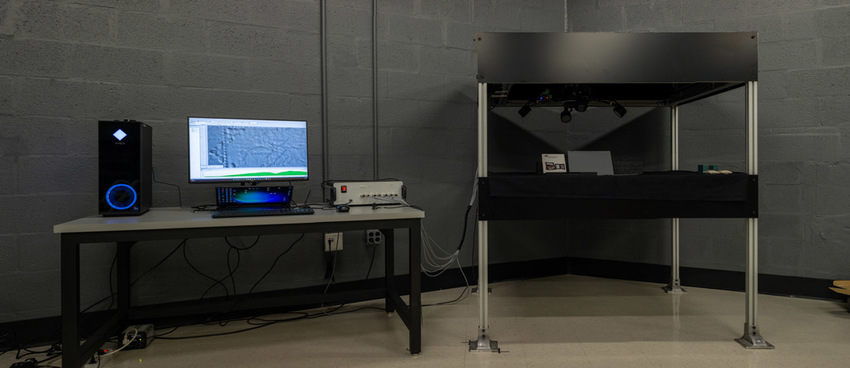
The Selene installed © Jorge Cano | Factum Foundation
The installation was followed by a training session for the Princeton Library Digital Imaging department led by Roel Muñoz, and tests were carried out on several items from the library. As demonstrated through the work done at ARCHiOx, the Selene is able to capture the surface of items at a resolution of one million pixels per square inch and record height variations equivalent to less than a fifth the width of a human hair. Both 3D information and colour are simultaneously and efficiently recorded at the same time.
More information coming soon.

Carlos San Juan and Jorge Cano installing the Selene © Factum Foundation

The Factum Foundation and Princeton University Library teams © Jorge Cano | Factum Foundation

First tests on a Cuneiform tablet: input (left), 3D surface (right) © Princeton University Library

Detail of a 4×4 cm section © Princeton University Library









